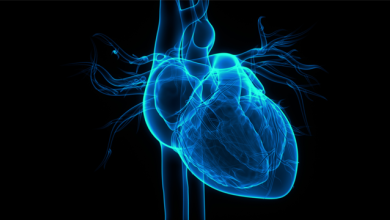Search results
Author(s):
Hussam Ali
,
Pierpaolo Lupo
,
Riccardo Cappato
Added:
3 years ago
Numerous large clinical trials have demonstrated the benefit of implantable cardioverter-defibrillators (ICDs) to prevent sudden cardiac death (SCD) in selected populations.1,2 These results and advances in defibrillation therapies have led to an impressive expansion of ICD implants and indications in recent decades. Although initially focusing on secondary prevention, current ICD indications…
View more
Author(s):
Andreas Metzner
,
Erik Wissner
,
Tina Lin
,
et al
Added:
3 years ago
Atrial fibrillation (AF) is the most common cardiac arrhythmia affecting 1.5–2 % of the general population.1 In the current clinical guidelines, catheter ablation is recommended in addition to drug-based antiarrhythmic therapy for patients suffering from symptomatic, drugrefractory AF. However, catheter ablation, if performed at an experienced centre, may also serve as first-line therapy in…
View more
Author(s):
Maiwand Mirwais
,
Pasquale Santangeli
Added:
8 months ago
Author(s):
Nikhil Singh
,
Kegan James Moneghetti
,
Jeffrey Wilcox Christle
,
et al
Added:
3 years ago
Considerable evidence supports the importance that the autonomic nervous system (ANS) has regarding cardiovascular health and prognosis.1 Specific variables derived from heart rate (HR) and heart rate variability (HRV) at rest and with exercise help assess the status of the ANS. Interest has also peaked on the use of HRV to assess the quality of an exercise programme. Among the athletic…
View more
Author(s):
George D Katritsis
,
Hugh Calkins
Added:
3 years ago
Over the past decades catheter ablation of atrial fibrillation (AF) has evolved from being a largely experimental procedure to a well-established therapeutic option for certain patients with AF.1–4 Currently the backbone of most catheter ablation techniques is to target the pulmonary veins (PVs) in order to achieve their electrical isolation and maintain sinus rhythm (SR).1 Additional techniques…
View more
Author(s):
Rahul K Mukherjee
,
Steven E Williams
,
Steve Niederer
,
et al
Added:
3 years ago
AF is the most common cardiac arrhythmia of clinical significance with an estimated prevalence of >33 million individuals globally.1 AF can be associated with significant symptoms and impaired quality of life of affected patients while also increasing the risk of stroke, heart failure and death.2 AF frequently co-exists with heart failure (HF). Up to half of patients with HF in the Framingham…
View more
Author(s):
Henry Chubb
,
Mark O’Neill
,
Eric Rosenthal
Added:
3 years ago
Device therapy is increasingly employed in the management of complex congenital heart disease (CHD). Bradycardias, most often related to sinus nodal dysfunction (SND) or atrioventricular nodal (AVN) block, may necessitate the implantation of pacing devices, while malignant arrhythmias may be treated by appropriate use of implantable cardioverter defibrillators (ICDs). However, there is a complex…
View more
Author(s):
David Filgueiras-Rama
,
Jose L Merino
Added:
3 years ago
Atrial fibrillation (AF) is the most common sustained arrhythmia in the clinical practice.1 The prevalence of the arrhythmia is progressively increasing in developed countries and moreover, it is expected to affect up to 12 million people only in the US by 2050.2 Antiarrhythmic drugs continue to represent the first-line of treatment in AF patients, either to restore sinus rhythm or to prevent…
View more
Author(s):
Pok Tin Tang
,
Duc H Do
,
Anthony C Li
,
et al
Added:
3 years ago
Ventricular arrhythmias remain a major contributor to cardiac morbidity and mortality worldwide, despite ongoing research and implementation of novel therapeutic interventions. Modern management of patients with ventricular arrhythmias requires a multidisciplinary team approach, especially in complex presentations with a background of multiple medical comorbidities.1,2 Such teams may include…
View more
Progress Continues in Our Quest to Cure All Types of Cardiac Arrhythmias with Catheter Ablation
Author(s):
Hugh Calkins
Added:
3 years ago
Article














 « First
« First